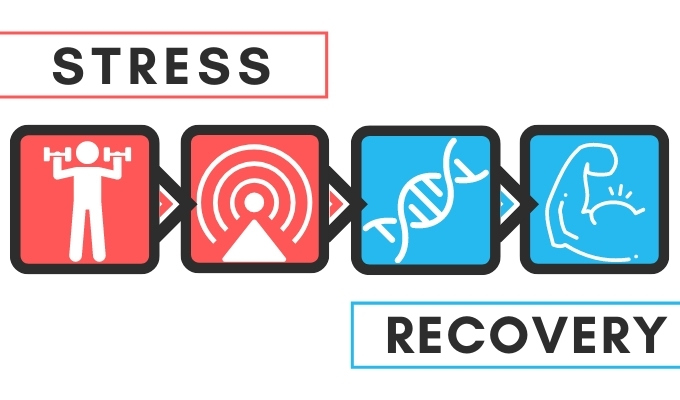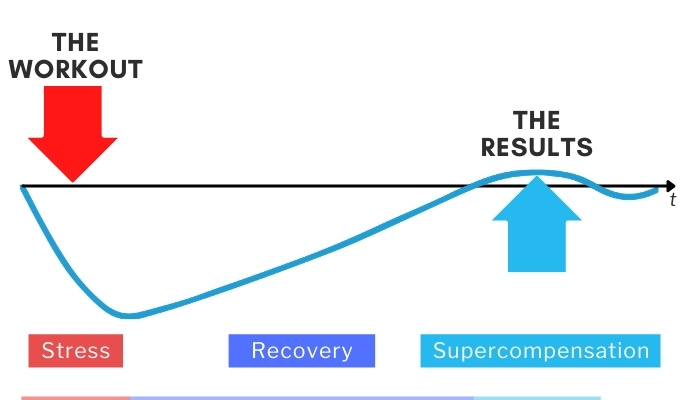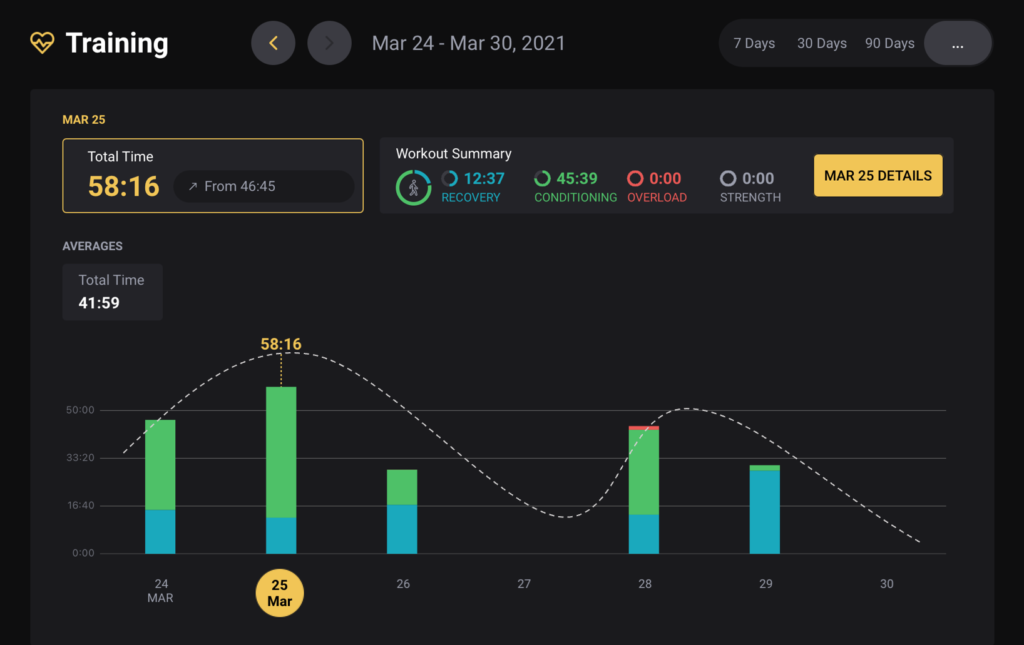When my older brother first introduced me to lifting weights in the 7th grade, I was instantly hooked. Like most people back then, I turned to the popular bodybuilding and fitness magazines to learn how to train.
In those days, there was no internet, no social media, no online courses. I was impatient and wanted to get bigger and stronger as fast as possible. Every month, I walked to the store and bought the newest copies of FLEX and Muscle and Fitness and dug in.

Unsurprisingly, my training program was a very typical bodybuilding split. Each day I trained a different body part. To be honest, it never occurred to me that there was any other way to build a program because that’s pretty much how everyone trained.
More than 25 years and the internet later, programming has evolved. Today, almost every training program out there generally falls into one of three categories:
- Body part splits – i.e. bodybuilding
- Movement-based – movements patterns and specific exercises
- Workout-based – group fitness classes, CrossFit, etc.
If you look at whatever training program you’re following now, chances are high that it’s built on one of these three foundations.
But what if there’s a better way?
What I want to share is why all three of these program types lead to plateaus more often than long-term goals
To show you exactly why that is and what to do about it, let’s start with how training makes you more fit in the first place.
What you need to know about how the body becomes more fit
For most people, fitness is a giant black box. They go to the gym; they lift weights, do some cardio, or go to a class. Then they go home.
They do this over and over and over again.
Sometimes they see their strength go up, watch their conditioning improve, and feel their clothes fit better.
Other times, they don’t improve at all. Even worse, sometimes they slip backward.
But why do these things happen?

The unavoidable reality is that most people have no idea. It’s all one big mystery.
They can’t explain why they only sometimes see results when they’re always working so hard.
That’s because no one has ever explained to them how the body becomes more fit in the first place. There are endless articles and videos on how to crush your biceps or add inches to your glutes, but very few that explain the inner workings of the human body.
But if you’re going to put in the hours of work, I think it’s important to understand the key to your results.
The path to turning your sets and reps into results
Although there’s a lot we still don’t know about the human body, science has given us a pretty clear map of the road that leads to fitness. From a big-picture perspective, we can break the process up into four phases:

- Training (applied stress)
- Sending the signal to adapt
- Flipping the genetic switch
- Increasing fitness (results)
If we take combine all four phases, we get a stress-recovery curve that shows how this process relates to your fitness:

This curve represents a common model that shows the process of supercompensation, i.e. improving fitness through training. It’s used in textbooks and countless articles to describe how training works, but there’s a big problem with it…
The traditional supercompensation model leaves out one giant piece of the puzzle.
This is why your workouts don’t always work
In a perfect world, every workout would lead to a small improvement in your fitness—just as the supercompensation model shows. Every time you go to the gym, you’d get a little stronger or have a bit better endurance.
Over time, these small results would add up to big changes. But we all know that it’s not that simple.
The biggest reason for this is a concept called the stress threshold.
The stress threshold represents the amount of stress, in the form of training, it takes to trigger the adaptation signals in the four-step fitness pathway above.

What happens if your workouts don’t reach this threshold? You still get all the fatigue, but you don’t trigger the body’s genetic switches to improve your fitness.
The challenge with fitness is that as it increases, it pushes the stress threshold further away. In other words, the more fit you become, the more volume and intensity it takes to reach your stress threshold to trigger your body to improve.
This is something most people understand and where the concept of progressive overload—the idea that you need to gradually increase the training load (stress) over time—was born.
While this sounds great as a textbook theory, there’s more to the story:
The more load you apply through your training, the more recovery your body needs afterward.
This is the breaking point for most people, and it’s where most programming models fail.
When people see their training results dwindle, they do more: more sets, more reps, more weight, more intensity, more workouts.
This works for a while, because they’re able to cross the stress threshold again to trigger improvement. Sooner or later, though, they out-train the body’s ability to recover.
Remember, the more stress you put your body under, the more recovery it needs afterward. If you’re constantly increasing stress in the form of volume, intensity and frequency without also increasing recovery, you’re setting yourself up for failure.
You end up accumulating so much fatigue that you can’t train hard enough to cross the stress threshold. Ultimately, all your hard work digs you into a deeper and deeper hole.

That’s the problem with trying to improve your fitness by always throwing more training, instead of more recovery, at it.
It’s not a winning strategy, because it’s not built on the foundation of how the body adapts to training.
A new programming model: introducing the stress-recovery cycle
I hope it’s now clear where traditional body part splits, movement-based, and workout-based programming models often fall short. The building blocks of these models are muscle groups, movement patterns, and blind intensity.
While all of these are important, the foundation of every training program should be the body’s natural stress-recovery cycle. You should only layer things like movements and muscle groups on top of that foundation.
You should design each training week around this cycle of stress and recovery. This is the only way to make sure your training and recovery work for you, not against you, to produce consistent results.
This is the difference between improving your fitness for a few months before hitting a plateau and unlocking long-term progress that continues for years.
How to build your training week around stress and recovery
To think and program in terms of stress-recovery cycles, start is by categorizing different types of workouts and training days based on how much training stress they place on the body. This is similar to the concept of “light,” “medium,” and “heavy” days used most frequently in Weightlifting programs.
In every program I write, I break up training days and workouts into four specific categories based on the overall volume and intensity, i.e. total stress. The total stress of a workout can also be called the training load.
- Development: This is the highest overall training load. These are the workouts where you train at least an hour. Prepare to hit 90% or more of your 1RM (if you’re lifting) and 90% of your max HR (if you’re doing conditioning).
You know you did a development workout when you’re walking slowly out of the gym and can tell you’ll feel it the next day.
- Stimulation: A step down from a development workout is stimulation. This type of workout is generally hard but not exhausting. Aim for a 7 or 8 on a scale of 1-10.You’ll typically lift and/or do conditioning between 80-90% of your max for most of the workout.
If you walk out of the gym feeling like you had a good training session but probably won’t be sore or tired the next day, that’s a typical stimulation workout.
- Rebound (active recovery): A rebound workout is a form of active recovery. This just means you’re doing something to promote recovery other than taking a complete day off of training. I’ve written extensively about how I build rebound workouts, and you can click here to learn more about them.
You can also include regeneration strategies in the active recovery category. Things like massage, float tanks, e-stim, cryo, yoga, meditation, sauna, cold plunges, etc., can all help promote recovery if you use them correctly.The way to know if something falls into the rebound category is by how you feel after you’ve done it. You should feel noticeably better than when you started. This is the goal.
- Day off (passive recovery): The last type of training day isn’t a day of training at all; it’s a complete day off from any type of training or regeneration strategy.How many days per week should be active recovery vs. passive recovery depends on your fitness level and overall weekly training stress.
The general rule is that as you increase your training load and fitness level, you should have more active instead of passive recovery days.
That said, it’s important to take at least one day completely off to avoid mental burnout. This can also help prevent you from pushing your stress threshold further away.
The stress-recovery model in action
There are almost endless ways to build training programs by following the stress-recovery model. Using the new Morpheus Coaching system (coming in June), I’ve highlighted three examples of what the model looks like in action.
In the graphs below, you can see both volume and intensity distributed across the training week. Volume is the number of minutes in each training session. Intensity is represented by the colored heart rate zones: blue for low intensity (recovery), green for moderate intensity (conditioning), and red for high intensity (overload).



You can learn more about using Morpheus to manage stress and recovery here.
Program-building guidelines
The goal is to build your programs around the stress of training, followed by active or passive rest to facilitate recovery in a cyclical pattern throughout the week. If you do that, you’ll be on the right track.
The following three principles will help you get the most out of each training week to drive long-term results:
- Most programs should be built around 2 stress-recovery cycles within each week. This generally gives the body enough training stress to improve fitness, while also optimizing recovery to maximize results.
- It’s generally best to avoid more than 2 development (high stress) days in a row as much as possible. This leads to a high level of fatigue that requires at least 2 days of active and/or passive recovery to prevent the potential for increased injury and burnout.
- The goal should be to start each new training week without any residual fatigue from the previous week. This prevents the accumulation of chronic fatigue that puts the body into a state of overtraining/under recovery.
What to do next
One of the biggest advantages of the stress-recovery model is that, unlike the common training splits I discussed earlier, you can use it for virtually any fitness goal.
It doesn’t matter if you’re trying to improve how you look and feel or get to the next level of performance. I’ve used it to train everyone from world champion combat athletes to weekend warriors, corporate executives, stay-at-home parents, and everyone in between.
As long as you organize your weekly training around the foundation of stress and recovery, you can fit any sort of body part, exercise, or movement-based programming on top of it.
To get started, take a look at your current program:
- How is it organized now?
- Where does each workout fall within the stress-recovery spectrum?
- Have you been making consistent progress over the last 3-6 months?
- If you’ve been tracking recovery, are there any patterns?
- Are you incorporating any form of active recovery in between your most intense training sessions?
Many times, it just takes a little reorganizing to make an existing program more effective. This could be as simple as adding a day of active recovery in between intense sessions or scaling individual workouts up or down.
A lot of people don’t realize that the exact same volume and intensity distributed differently across the week can lead to very different outcomes.
Fitness is about more than just how many sets and reps you do or which exercises you choose. It’s also about how you organize and distribute these components in your weekly plan.
That’s why it’s possible to make small changes to what you’re already doing and see massive improvements when you strike the right balance between stress and recovery.
Start with a program I designed
If you want to get started seeing how I build programs aroun the stress-recovery cycle, I recommend checking out Metamorphosis, my 8-week program designed to get you in the best conditioning shape of your life.
Bonus: join now and get an extra 4-weeks of programming for free! Learn More.

